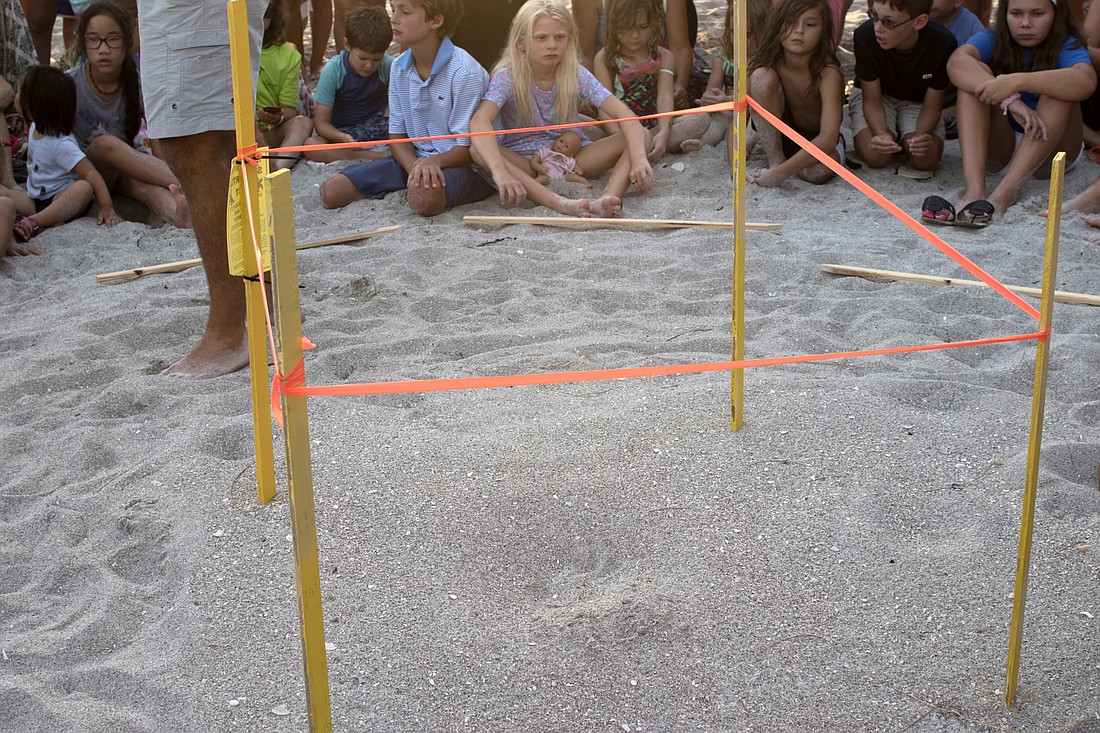- November 17, 2024
-
-
Loading

Loading

It’s that time of year.
The 1,187 nests on Longboat Key are beginning to hatch.
Since May, Longboat Key beaches have been somewhat taken over by turtle nests, and now the Longboat Key Turtle Watch is using the hatchings as an educational opportunity.
On July 25, the Turtle Watch hosted its first public nest excavation. More than 280 people gathered near the 5000 block of GMD to watch volunteers from the Turtle Watch excavate a green sea turtle nest.
The spotlighted nest was found by the Turtle Watch on May 30, so it was most likely laid the night before. It hatched on July 22.
The Turtle Watch walks Longboat beaches every morning. When determining if a nest has hatched, volunteers look for tiny turtle tracks and a depression in the nest.
If they see these clues, they wait three days until they excavate the nest in case there are any stragglers.
As volunteer Mike Herron began to excavate the nest, Turtle Watch President Tim Thurman explained the process to the crowd.
Herron began by scooping sand out of the way until he saw the first hatched egg shell. Then he measured from the top of the sand to the top of that egg shell. This nest was measured at 42 centimeters deep.
In each turtle nest, there are about 100 eggs. When digging into the nest, Herron found four hatchlings still in the nest drawing plenty of “awws” from the crowd. Three were alive, and one was dead.
Herron and fellow volunteer Charlene Donnelly cleared the nest off all the shells and then continued to gather data for Mote Marine Laboratory.
Thurman explained that this nest was a little special. It was a green sea turtle nest, which are more rare than loggerhead nests. Green sea turtles are a threatened species under the Florida Fish and Wildlife Conservation Commission list.
The Turtle Watch can spot a green sea turtle nest based on the track patterns left in the sand. Other differences include their physical appearance. Green turtles have smaller heads in relation to their bodies, while loggerheads have larger heads. Green turtles also weigh in between 300 and 400 pounds as adults, while adult loggerheads weigh between 200 and 300 pounds.
On the Manatee County end of Longboat Key there are 524 loggerhead turtle nests and only four green sea turtle nests. But that number is up from the one green sea turtle nest in 2016.
After the nest was excavated, the three green sea turtle hatchlings and one loggerhead hatchling that had been found earlier in the day were released into the Gulf of Mexico.
As the four hatchlings crawled to the ocean, they had a large cheering section. As the last hatchling got swept up by a wave and swam away, the crowd dispersed, parting with well wishes for the little turtles.
To receive alerts about when the next public excavation will take place, sign up at lbkturtlewatch.com.